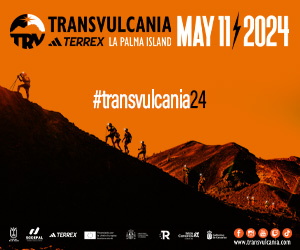 March
21
March
21
Tags
BARKLEY MARATHONS: NOT FNISHERS IN ITS 2021 EDITION. BARKLEY HISTORY 1986-2021.
BARKLEY MARATHONS ALSO NOT FNISHERS IN ITS 2021 EDITION. HISTORY BARKLEY 1986-2021. There have been only 15 finishers in 30 years. Our ULTRA TRAIL USA section today reviews the most picturesque perhaps event in the country, which has made its creator Gary (AKA Lazarus Lake) rich and famous.
It’s five loops between hills, with abundant trees, weeds and fog to cover 100 miles in 60 hours. The ugly and twisted terrain and the ugly weather come together to make it a difficult race to finish, the key requirement sought by the race director.

Barkley Marathons. Photo: Alexis Berg.
BARKLEY MARATHONS ALSO NOT FNISHERS IN ITS 2021
The 2021 Barkley Marathon departed with a good cast of USA runners, as international runners had no easy place in an edition conditioned even by COVID19. Still, women like Maggie Guteri, Liz Cantyhane and Courtney Dauwalter, along with men like Pavel Paloncý (Spine Race winner), Jamil Coury, Jared Campbell or Luke Nelson augured to a high standard.
THE FIRST LOOP
After heavy rains in the previous hours, the official departure notice was at 2.04AM. As is tradition, the race started an hour later at 3..04AM, even in the middle of the night. It sought a little clearing in the rain, which would then fall again. Still, the fog was a faithful companion in the departure of the small platoon grouped in the classic starline, next to the park fence.
Jared Campbell and Luke Nelson completed the initial loop after 10h21m. They took some time to recover and leave at 10h40m of the race. As soon as they left, the three girls completed the first loop in a time of 10:44m. By then we knew that no man had completed the race with that speed from the starting line. But would equally affect three ultrarunners like them?
In the end, only 16 runners managed to overcome the first cut and faced the second loop of the race.
THE SECOND LOOP LEAVES JARED CAMPBELL AND LUKE NELSON ALONE IN THE RACE.
Again Jared and Luke were leading after completing the second loop. They did it in 24h32m. The temperature kept dropping, the rain kept falling and the fog was still very persistant.
Many of the runners were about to throw the towel already. In fact, throughout the second loop the platoon was reduced to almost nothing. First runners such as Frank Gonzalez, Tano Isola, Andy Pearson, Ian Harris, Harold Zundel and Hiram Rogers set a DNF.
At that time, there were only eleven runners left in the process of the second loop. But there was still much to do: Chris Hanlon, Pavel Paloncý , Scott Martin, Wes Thurman and Niklay Nachev. After the first 20 hours of fighting, only 10 runners remained in line.
The three ladys, Maggie, Cournety and Liz completed the second loop in 26h52m. Unfortunately, the cut to move forward towards the third round was marked 26h40 so they could not move on. The same fate suffered Jamil Coury, who completed the second loop in 27h04 and was therefore out of the race as well. Only two runners kept going looking for the race equestrian….
THE THIRD LOOP MARKED THE END OF BARKLEY MARATHONS 2021.
The last runners were Jared Campbell and Luke Nelson and they completed the third loop in a time of 39h04m. A brand that qualifies them for the honorary title of having completed the “Fun Run” but which, being above 36H to continue towards the fourth loop, closed the race for this year.
MORE ABOUT THE BARKLEY MARATHONS RACE:
- “The Finishers” Magnificent Photo Book, by Alexis Berg.
- Barkley Marathon: The race that eats its young. Documentary 2015.
- La Barkley, Sans Pitié. Documentary 2018 by Alexis Berg.

BARKLEY MARATHONS, LA LEYENDA
The Barkley has over time created its own legend. Perhaps because the layout is ugly and twisted, the way tends to be cruel and many of the rules of the race are unclear. Maybe because it’s a hateful test, with five laps of the same path in miserable conditions. Perhaps because of the aura of the few finishers achieved in so many years.
To reinforce this aura, Barkley has always sought to be an event with something mysterious, deliberately: It doesn’t have an official website. It’s a mystery how to enter, it doesn’t have a race map, nor is the list of participants published online. It’s not a spectator event. By reference, in 2018, it was almost 1,300 runners who managed to get their interest to Lazarus. Among them, he only accepted 40. But before the race, let’s talk better about the pitch of it and its history, After all, Lazarus had already created an ultra before Barkley, but switched horses to mid-river when he saw that the media possibilities of the Cuberland Mountains in Tenesseee were greater.
THE HOME OF BARKLEY MARATHONS: CUMBERLAND MOUNTAINS, TENNESSEE
The Barkley runs in the Cumberland Range in Tennessee, which includes the Crab Orchard Mountains on the Eastern Tennessee Cumberland Plateau. These mountains also used to be called the Brushy Mountain Range. Frozen Head with just 1,013 meters of is the highest peak. And as such, it gives its name to the current natural park of the area.
These mountains are very rugged by the erosion of many streams that opened deep gorges. It is a remote and difficult area to cross, known for its towering cliffs, huge cliffs and dark caves. But there’s something else in these mountains that paved the way for the legend of the Barkley. To understand the full story of this test, the violent history of Brushy Mountain State Prison is part of the race, as are the men who in the past chose to escape through these steep peaks. Mountains, mines, prison and escapees all played a role in the birth of the race.
BRUSHY MOUNTAIN STATE PRISON
In the late 19th century, the state of Tennessee rented convicts as unpaid labor to work in the coal mines, it was but a brutal type of public slavery. Eventually, the miners rebelled in 1891 in what was called the Coal Creek War.
In the best American judicial tradition, the labor dispute judge ruled in favor of miners. In Tennesse’s best tradition, the governor then bet on circumventing this decision and eliminating intermediaries. In 1896 the state became involved in the coal mining business, which proved to be very lucrative. Thus, he bought 13,000 acres that included a good portion of Barkley’s future layout.
They then used the inmates to build Brushy Mountain Prison, a four-story wooden structure. As a punchline, the prisoners took over mining again in the mountains, such as “Reintegration Measure” no longer as a subcontractor to a private company.
Part of the myth surrounding the race is that Brushy Mountain Prison was a very safe place. Nothing more false. The prisoners escaped all the time from the facility, but overcoming the mountains and terrain presented a greater challenge. Hence the tracking system had on the outskirts of the palisade with nine hounds, As soon as a leak is achieved it was put on the runway and followed until they find it or it is shown that recapture is impossible. Those of you who have seen the film “The Chase”, starring Marlon Brando in 1966, can give you a clear idea of the situation.
A good number of men who escaped suffered in the Cumberland Mountains, but many managed to get off the rugged terrain. From 1922 to 2009 there were hundreds of leaks. Most of them were because the prisoners were constantly transferred to and from the mines, the prison farm and the courts. But many escaped from the prison itself. They escaped on foot, in stolen cars, and in 1931 even one escaped using a mule.
BARKLEY MARATHONS (1986-2021) HOW WAS IT BORN?
The inspiration for creating the Barkley in 1986 was James Earl Ray’s failed 1977 prison escape. The real protagonist of the escape was around both: the Brushy Mountain State Prison and the Cumberland Mountains. Ray was one of the most mediated inmates in the United States.
It was nothing less than Martin Luther King Jr’s convicted killer. He spent more than two days trying to escape in the rugged Cumberlan Mountains. In the end, he was found a few miles from the prison. Ray’s disastrous escape became part of the country’s popular acquis.
In 1978, Gary Cantrell (later known as “Lazarus Lake”) was an accounting student at Middle Tennessee State University. He was a marathon runner with eight finals in his name at the time. Like so many of us, Cantrell was also interested in going from “marathon” to “ultra”.
So in 1979, he and his fellow Horse Mountain Runners created their own ultra to run: It was the Strolling Jim 40-mile Run in Wartrace, Tennessee. The event was named after a famous horse and became one of the oldest annual ultras in the country. This was Cantrell’s first experience in creating a tough career.
1981: THE IDIOT’S RUN. THE PIONEER.
Cantrell’s masochistic racing management skills were further honed when in 1981 he put together “The Idiot’s Run” in Shelbyville, Tennessee, a date consisting of 76 miles and 37 significant hills. He was surprised when several runners expressed interest. Said: “Isn’t there a race hard enough to discourage these maniacs? If we had a 250-mile hell with no liquids allowed, I think we’d have between 10 and 15 people.” A dozen runners showed up for The Idiot’s Run and only two were finished.
The following year, 1982, he extended the length of the route up to 108 miles and removed the flat sections. I was gaining experience adjusting tours every year to make them more difficult. By then Gary was clear about a basic principle of reverse psychology forulters: “The harder, uglier and more demanding the test, the less they end up. The fewer they finish, the more they want to run it.”
He once made sure that being able to say that his was the most terrible race ever held anywhere in the world, he set out to advertise it. This got an article about his evidence published in newspapers across the country. By degrcia, that same year, six of the twelve enrolled managed to finish the test. The winner did it at 17:43:45, so maybe… The test wasn’t that hard. Cantrell was clear about his objective and forced the necessary changes so that no one could finish: He extended the distance to 115-120 miles in 1984. Eight runners signed up that year.
At the same time, Gary Cantrell and a friend, Karl Henn, were drawn to the push for publicity they could achieve if they bet on Frozen Head State Park in Tennessee as the site of a new project. A terrain they both knew well, since they had walked many times during the 1970s. It was ugly, it was tough and right there was Brushy Mountain State Prison, home to one of the most famous prison escapes in American history, James Earl Ray’s escape to the mountains in 1977. In 1986 they released the first edition of the Barkley Marathon. The rest, it’s history…
BARKLEY MARATHON: REGISTRATION.
Those wishing to enter must submit a rehearsal. The entry fee includes bringing a license plate from your state/country of origin, for the founder’s already considerable collection. Runners receive tour instructions the day before the race and are not told when exactly the race begins. They only receive a one-hour warning when the conch giving the warning blows.
To prove that they run the tour correctly, books are placed in various places in the route. As they pass through each of them, runners must start a page from each book that matches their bib number. If they lose a page or a book, they’re out.
BARKLEY MARATHONS 1986-2021: LIST OF FINALISTS.
1995 (1) Mark Williams 59:28:48 First runner-up since the creation in 1986.
2001 (2) David Horton 58:21:00 Record! Blake Wood 58:21:01
2003 (1) Ted “Cave Dog” Keizer 56:57:52 Record!
2004 (2) Mike Tilden 57:25:18 and Jim Nelson 57:28:25
2008 (1) Brian Robinson 55:42:27 Record!
2009 (1) Andrew Thompson 57:37:19
2010 (1) Jonathan Basham 59:18:44
2011 (1) Brett Maune. 57:13:33
2012 (3) Brett Maune 52:03:08 Current record Jared Campbell 56:00:16; John Fegyveresi 59:41:21.
2013 (2) Nick Hollon 57:39:24 and Travis Wildeboer 58:41:45
2014 (1) Jared Campbell (2nd time) 57:53:20
2016 (1) Jared Campbell (3rd time) 59:32:30
2017 (1) John Kelly 59:30:53
IF YOU LIKE WHAT YOU READ,
CLICK THIS BUTTON TO SUPPORT US IN PATREON.COM/MAYAYO
Read the article in Spanish HERE
Post by Héctor Rubio for Trailrunningspain






